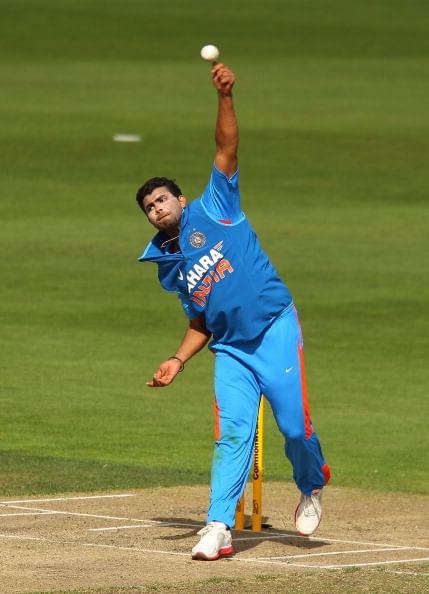Depending on who you listen to, the recently-concluded Champions League T20 was either cricket’s ugly step-sister or an altogether more insidious event, designed purely to further the interests of Indian cricket as a cynical, money-making exercise.
The aesthetics might not have been to everybody’s taste, with four IPL teams automatically qualifying for the tournament ahead of worthy, ‘unfashionable’ teams. Unlike the Mumbai Indians, these teams had not finished fourth out of nine – rather, sides such as Sialkot Stallions and Trinidad & Tobago were national champions, yet were knocked out in the arduous qualifying rounds. It left a bad taste in the mouth to see IPL sides pull an act that the Vikings would have been proud of, pillaging T&T of their stars in Sunil Narine, Kieron Pollard and Dwayne Bravo.
Effectively, the IPL teams were given a 30 metre head start in a 100 metre race, with some of their opponents forced to cannibalize each other before the race, just to qualify for the main event.
Perhaps exemplifying the futility of it all, Bravo didn’t even play a match for Chennai Super Kings, who still had to fork over $150,000 to T&T (a particularly bizarre way of inducing Stockholm Syndrome).
Lust for Schadenfreude
Ultimately, like the multitude of other T20 tournaments that have simultaneously infiltrated and invigorated the fan’s calendar, CLT20?s raison d’être is largely irrelevant once we are able to take off our holier-than-thou Jonathan Agnew-tinted specs, and look at it from a purely cricketing point of view. Many arguments against the CLT20 have been verging on fallacious potshots regarding the fact that the tournament doesn’t actually contain ‘champions’ per se, but basing your entire hatred of a tournament on a misnomer is something that I can’t summon from the Grammar Nazi within me.
So, was the cricket actually any good? With three of the four IPL teams bombing out at their first hurdle, it’s doubtful as to whether many fans stayed to find out. A tournament where India’s former beacon of hope, multi-millionaire, and owner of ridiculous hair embarrassed himself with a series of waning displays is usually a hard sell – with just 40 runs in four innings, maybe the retirement talk surrounding Ravi Jadeja isn’t so premature after all?
The attraction in such a league lies in its romantic nature. Jadeja’s rumoured $5 million per year dwarfs the entire BBL salary cap of the Sydney Sixers, as well as their sizable CLT20 winner’s pot. With such discrepancies in earning power, and the sports fan’s insatiable lust for schadenfreude, no neutral follower could ever summon up the courage to support an IPL team – and the likes of the Lions and Sixers made sure that all twelve of us were not left disappointed.
As well as providing the platform for journeymen to score a huge pay day, many players took advantage of the potential for an additional one at the next IPL auction – Mitchell Starc won the Player of the Series award for his 14 wickets, but players such as Steven O’Keefe and Azhar Mahmood would prove value buys for any team.
How To Level The Playing Field
The notion of a ‘Champions League’ is certainly an attractive one, and its European footballing equivalent is a huge draw for both fans and sponsors, with a longevity proven over the best part of six decades. The CLT20 version will no doubt strive to replicate the success of its cash-rich UEFA counterpart, but there is a gulf in both fairness and finances.
To qualify for the UEFA Champions League, different European leagues are assigned coefficients based on their respective strengths, based objectively on previous performances of those leagues over the past five years. Compare this to the CLT20, where Indian, Australian and South African teams were allowed to directly enter teams according to their financial stake in the tournament. Of course, this is inherently unfair to other teams, but in contrast to football, cricket’s viewership is concentrated in a single, Shastri-populated country.
Without India’s participation, the CLT20 falls flat on its feet – viewership figures for the South Africa vs Australia final will make intriguing reading – and so, a healthy Indian contingent is essential to the success of this tournament, at least as it gets off the ground. The playing field looks even more slanted in favour of the IPL sides when we see that Indian teams are allowed four overseas players, whereas other countries are allowed a maximum of two. This blatant unfairness should be viewed as a temporary, necessary evil.
In terms of finances, Sydney Sixers earned $2.5 million as this year’s champions. As runners-up in 2011, Manchester United’s UEFA Champions League campaign earned them in the region of $70 million, and this is no doubt a huge long-term carrot for cricket’s member boards. (Rumours that the BCCI tried to tax Manchester United for not including an Indian in their squad remain unsubstantiated).
Whether the CLT20 remains viable in a decade’s time will largely mirror the future of the IPL, which as we pointed out last week, is precarious at best. For the time being, the tournament that nobody wants but everybody tolerates is left to tease us in an annual three-week period of cricketing limbo.
Brand-new app in a brand-new avatar! Download CricRocket for fast cricket scores, rocket flicks, super notifications and much more! 🚀☄️

